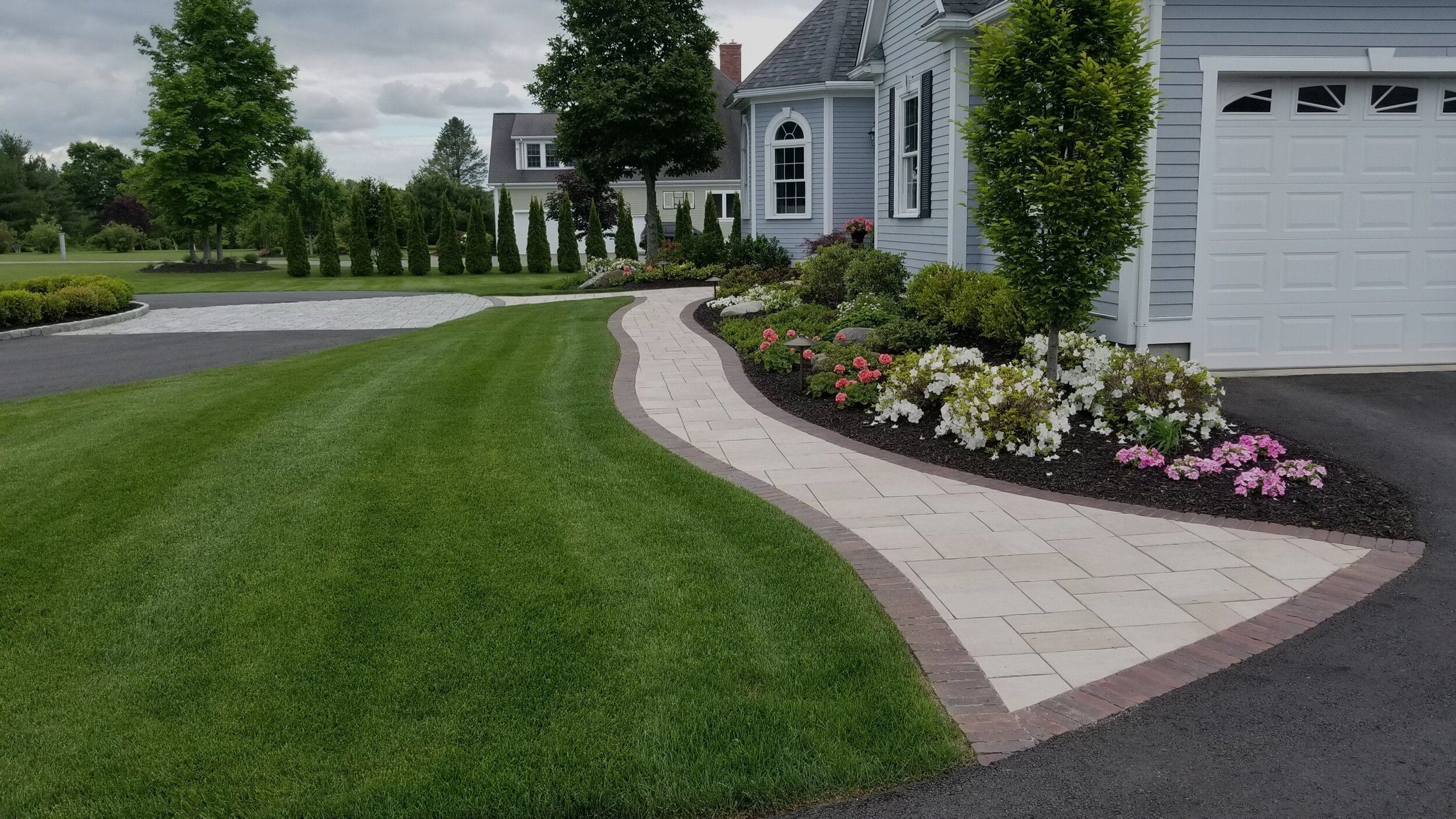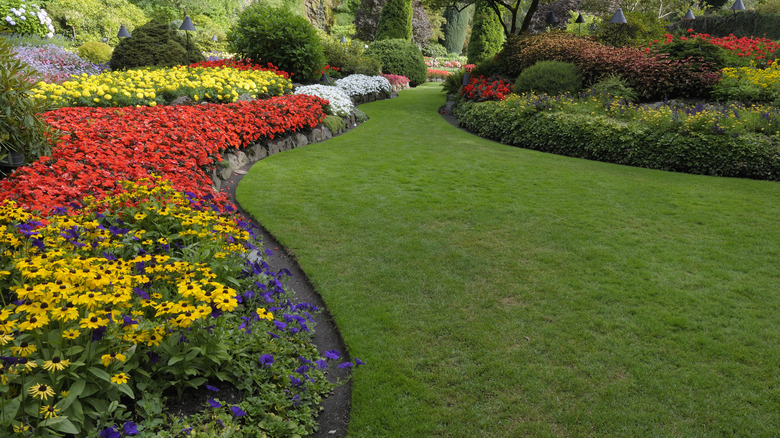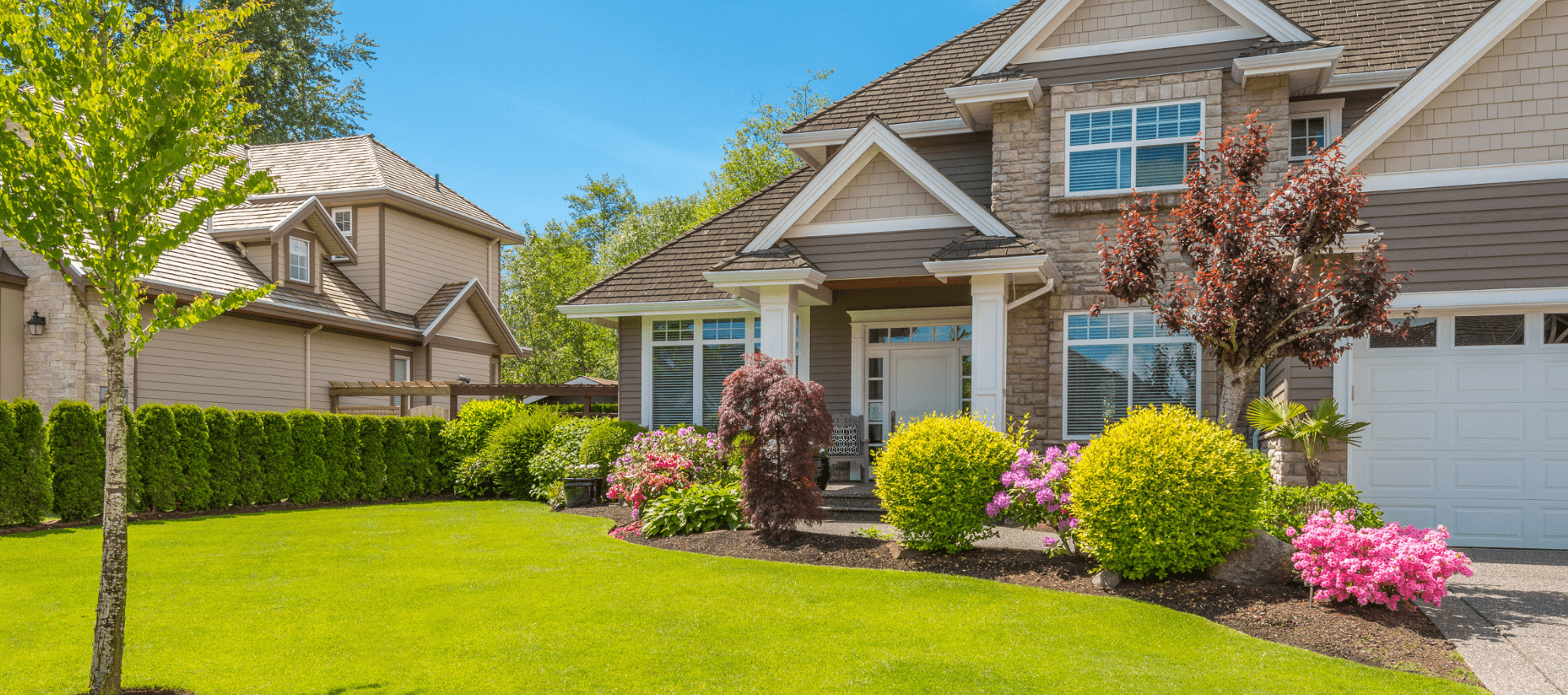Elevate Your Property's Visual With Sustainable Landscaping Layouts and Eco-Friendly Practices

Benefits of Lasting Landscaping
Applying lasting landscape design methods not only preserves natural sources but also advertises biodiversity and boosts overall ecological wellness. One considerable benefit is the reduction of water consumption with the use of drought-resistant plants, rainfall yards, and reliable watering systems.
Moreover, lasting landscape design can enhance soil health by lessening making use of chemical fertilizers and chemicals, therefore creating a much healthier atmosphere for plant development and useful dirt microorganisms. This, in turn, boosts the total durability of the landscape to endure ecological stressors and climate adjustment effects - landscaping companies Jacksonville. Furthermore, lasting landscape design methods can draw in diverse wildlife, consisting of pollinators like and butterflies, cultivating a much more well balanced and lively environment within the residential or commercial property
Incorporating Native Plants
To construct upon the benefits of sustainable landscape design, a strategic focus on including indigenous plants can further enhance ecological resilience and promote biodiversity within the landscape. Indigenous plants are species that naturally occur in a certain area and have developed to prosper in the regional environment, soil problems, and ecological community. By consisting of indigenous plants in landscaping styles, homeowner can minimize water usage, decrease the demand for chemical pesticides and plant foods, and sustain the local wild animals population.
Including native plants also assists in maintaining the one-of-a-kind personality and identity of an area's flora. These plants often call for less maintenance as soon as developed, making them a sustainable and cost-effective landscaping option over time. In addition, native plants can bring in native pollinators like bees and butterflies, adding to the general health of the ecological community.
When selecting indigenous plants for landscape design tasks, it is necessary to pick species that are appropriate to the specific ecological problems of the website. Consulting with herb gardens or local nurseries can give important support on selecting the appropriate native plants for a specific location. By integrating indigenous plants into landscape design layouts, homeowner can create beautiful, sustainable outdoor areas that benefit both the setting and the neighborhood.

Water Preservation Methods
Effective irrigation techniques play a vital function in lasting landscaping methods, making certain ideal water preservation initiatives in exterior spaces. Leak irrigation delivers water directly to the roots of plants, reducing dissipation and runoff.
In enhancement to advanced watering methods, xeriscaping is another water-saving landscape design technique that focuses on utilizing drought-resistant plants, mulch, and effective irrigation to develop a low-water landscape style - landscaping companies Jacksonville. By picking indigenous plants that are appropriate to the local environment and soil conditions, residential property proprietors can lower the need for too much watering, inevitably preserving water and promoting a sustainable exterior environment
Eco-Friendly Hardscaping Ideas
Enhancing exterior areas with environmentally friendly hardscaping check that attributes can add substantially to sustainable landscaping techniques. Decide for products like reclaimed wood, recycled concrete, or natural rock to reduce ecological influence when taking into consideration hardscaping aspects. These products not only add an one-of-a-kind aesthetic interest your outdoor room yet additionally lower the requirement for new sources extraction.
Executing absorptive paving alternatives such as crushed rock or absorptive concrete can help in reducing water overflow and promote groundwater recharge. These options permit rainwater to leak right into the ground, stopping disintegration and decreasing the concern on stormwater systems.
Integrating indigenous plants into hardscaping styles can better boost eco-friendliness by sustaining local wildlife and reducing the need for too much watering or chemical treatments. By integrating green walls or upright gardens, you can introduce extra greenery right into city settings, enhancing air top quality and biodiversity.
Integrating energy-efficient lighting, such as solar-powered LEDs, into hardscaping designs can lower electrical energy consumption and lower your residential or commercial property's carbon footprint. Focusing on environment-friendly hardscaping ideas not only boosts the beauty of your exterior space however also shows a dedication to ecological stewardship.
Maintenance Tips for Sustainable Landscapes

Frequently trim plants to advertise healthy and balanced development and avoid overgrowth that can lead to pest invasions or illness. Usage organic fertilizers to nourish the dirt and plants Find Out More without dangerous chemicals that can seep into the setting. For hardscaping aspects, such as permeable pavers or rock pathways, routinely tidy them to avoid debris accumulation and keep their performance. By remaining positive with upkeep tasks, you can protect the beauty and sustainability of your landscape for many years to come.
Final Thought
In conclusion, lasting landscaping techniques use various advantages for homeowner, from improving the aesthetic charm of the environments to advertising ecological preservation. By including native plants, executing water conservation methods, and using eco-friendly hardscaping concepts, homeowner can create gorgeous landscapes that are likewise ecologically accountable. With correct upkeep, sustainable landscapes can contribute and thrive to a healthier community for both people and wildlife.
Additionally, lasting landscape design can boost soil health by reducing the usage of chemical plant foods and pesticides, consequently creating a healthier environment for plant growth and beneficial dirt microorganisms.To construct upon the benefits of lasting landscaping, a tactical emphasis on including indigenous plants can additionally improve environmental resilience and advertise biodiversity within the landscape. By including indigenous plants in landscaping layouts, residential or commercial property proprietors can minimize water usage, decrease the requirement for chemical pesticides and fertilizers, and sustain the local her comment is here wildlife population.
These plants often require much less maintenance once developed, making them a lasting and cost-effective landscape design option in the long run. By incorporating indigenous plants right into landscape design designs, building proprietors can produce attractive, lasting exterior rooms that benefit both the setting and the area.